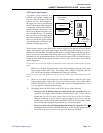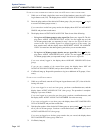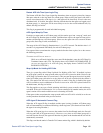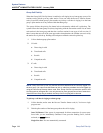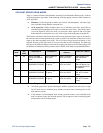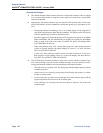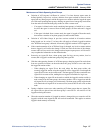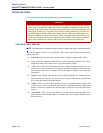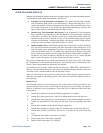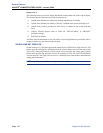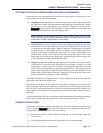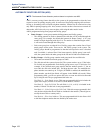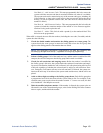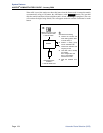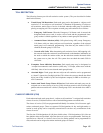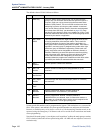
Page 149
System Features
AXXESS
®
ADMINISTRATOR’S GUIDE – January 2004
Inter-Tel Phone Displays
INTER-TEL PHONE DISPLAYS
Whether call information appears on the Inter-Tel phone display and what information appears,
is determined by station flags in the database. The flags are:
• Expanded CO Call Information On Displays: This station flag determines whether
call information (trunk name or call information) is displayed at the phone. If it is
enabled, the Outside Call Party Information Has Priority flag (described below) deter-
mines what is displayed. If it is disabled, the programmed trunk group username will
appear on the display. In the default state, this flag is enabled.
• Outside Party Call information Has Priority: If the Expanded CO Call Information
flag is enabled (as described above), this flag determines what information is displayed
at the phone. If enabled, any call that is received on a trunk that provides outside call
information (for example, Caller ID or ANI), will be identified on the phone’s display
with the call information. If disabled, the display will show the DID or DNIS informa-
tion for the call (if available). In the default state, is it enabled.
• Display Outside Name: If the Display Outside Name station flag is enabled, the phone
user can switch between the outside party name and number when connected to a CO
call with outside party information. The phone user enters the Display Outside Party
Name On/Off feature code (379). In addition, the enhanced ring-in displays will provide
the user with more information such as both Caller ID name and number if available, or
tell the user if a Caller ID number is blocked or out-of-area. This is a station flag that
applies to Inter-Tel phones only. In the default state, this flag is enabled.
The system will provide the user with advanced displays for direct ring-in calls, if the station
has “Expanded CO Call Information On Displays” and “Outside Party Call Information Has
Priority” station flags enabled (by default they are enabled).
A typical direct ring in display would look like the following: “TRNK GRP 1 RINGING IN.”
However, with the enhanced displays, the system will attempt to display the name of the out-
side caller on line 1 and the number of the outside caller on line 2.
When a CO call rings into the system, the system uses the following criteria to determine the
name that will appear on the display phones. The criteria are listed from highest priority to
lowest priority.
Display Line 1
The following criteria are used to display the name on the top line of the ring-in display. This
assumes that all of the necessary station flags are properly set and usernames are correctly
filled in or left blank (at the programmer’s discretion) for Call Routing Tables and Trunk
Group Names.
1. Outside Party Name provided by the Desktop Application, if available.
2. Outside Party Name provided by Caller ID, if enabled at the system-wide flag level.
3. Outside Party Name provided by system speed-dial. If the collected number matches a
number in a speed-dial bin, the system uses the name of the corresponding speed-dial
bin.
4. Outside Party Number provided by the Desktop Application.
5. Outside Party Number provided by Caller ID, if enabled at the system-wide flag level.
6. Outside Party Number provided by ANI service, if enabled at the system-wide flag
level.
7. Call Routing Table Name, if the name is not blank.
8. Trunk Group Name, if the name is not blank.
9. Default Trunk Group Name (TG XXXXX).



